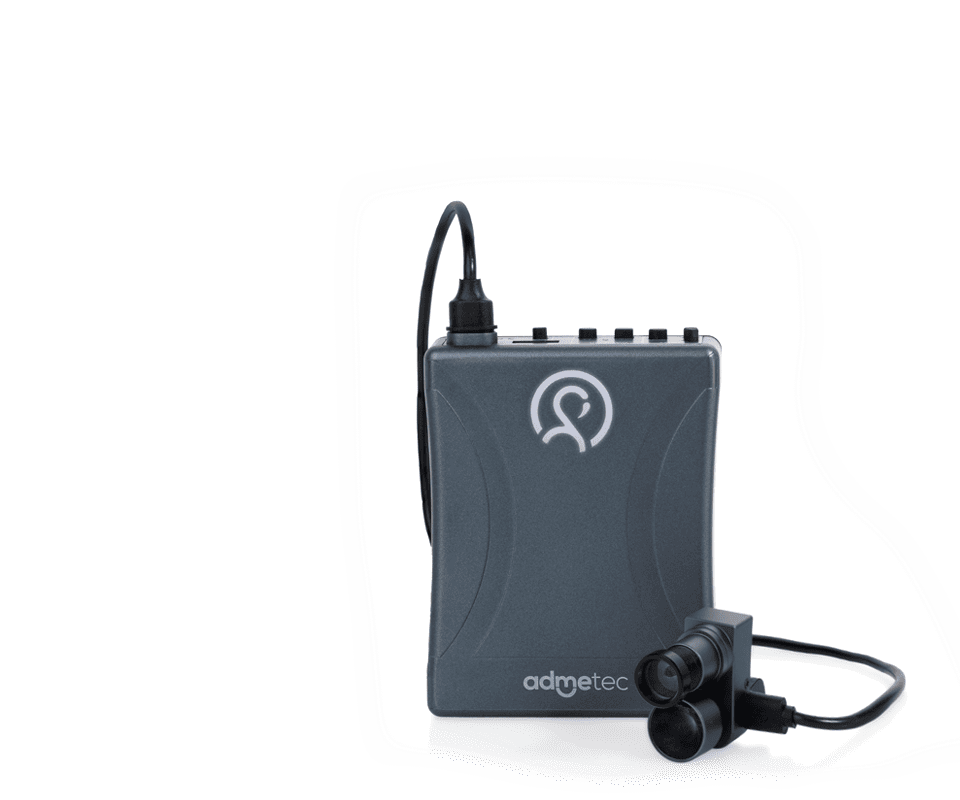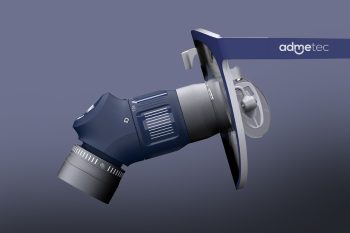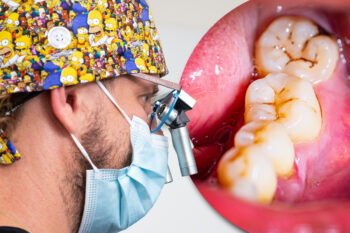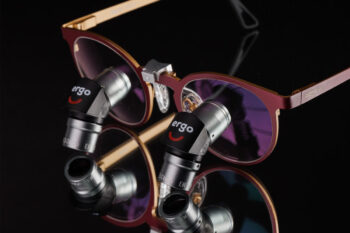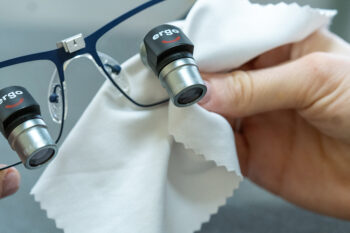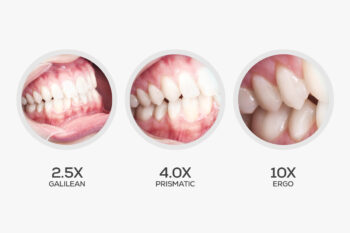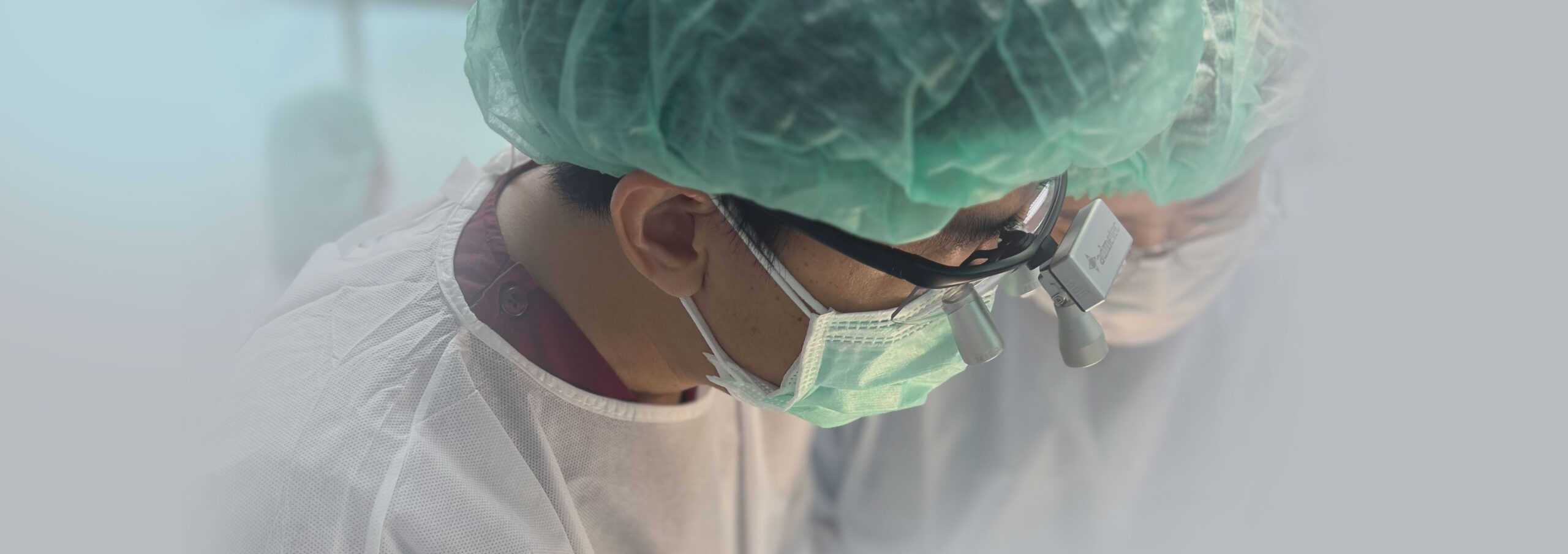
When choosing your headlight, there are four key factors to consider:
- Wired or Cordless Operation
- Weight
- Light Intensity (LUX)
- Compatibility with Loupes Magnification
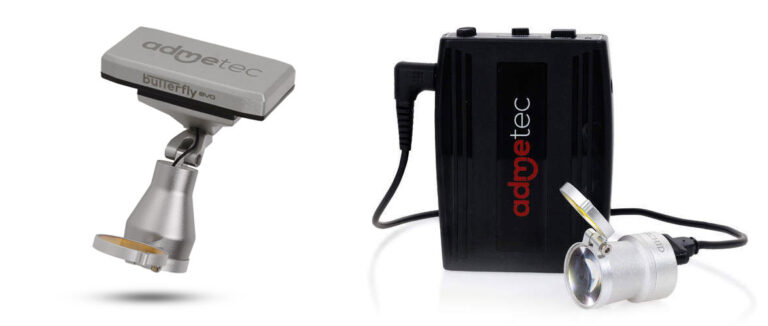
Wired or Cordless Headlights – Which is Best?
Both wired and cordless options have their advantages and disadvantages, and the choice ultimately depends on your priorities regarding convenience, comfort, and technical capabilities.
Convenience: Cordless headlights offer unparalleled convenience and a seamless work experience. Removing the need for cables enhances freedom of movement, particularly when wearing loupes, leading to increased comfort and efficiency.
Comfort: While cordless headlights enhance convenience, weight is also a crucial factor to consider. Wired headlights connect to a battery pack worn on the body, while cordless headlights integrate the battery with the headlight itself, making them inherently heavier. At Admetec, we address this concern by evenly distributing the weight across the frame’s bridge in our Butterfly headlight design, reducing pressure on the physician’s nose.
Technical Capabilities: Technical considerations include battery runtime and charging duration. Admetec’s headlight sets are engineered to run for at least six hours on a single charge – suitable for a standard workday. While cordless lights offer shorter charging times, wired models provide higher intensity light. Battery replacement is straightforward for both wired and cordless models, with our Orchid wired models featuring plug-and-play functionality, and our Butterfly cordless lights featuring an intuitive magnetic battery connection.
Weight – How Heavy Is The Headlight?
Cordless lights tend to be heavier than wired lights, and when wearing loupes for extended periods, every gram counts. Lighter headlight options contribute to overall comfort, reducing end-of-day fatigue. Admetec prioritizes lightweight design across all products, with our Butterfly headlight models weighing between 25-30 grams. All Admetec products are designed to be ultra-light and Admatec wired lights are even lighter.
How Will Light Intensity (LUX) Impact Your Work?
It would be natural to assume that the stronger the light intensity, the better. In this case, stronger is not necessarily better. Light intensity should match the type of work you are doing as follows:
- Hygienists require less intensity than a dentist doing pinpoint work.
- Height matters. If you are tall or work with Ergonomic loupes, your working distance will be larger than someone who is shorter or works with Galilean or Prismatic loupes.
The further a light source is from where the light hits, the more the beam circumference expands and diffuses. These elements need to be balanced so that the beam is not:
- Too small: leaves dark “borders” around your field of view.
- Too large: spills over and ‘blinds’ your patient.
Compatibility With Loupe Magnification
As magnification increases, objects viewed through loupes may appear larger while the amount of light remains the same, resulting in a darker field of view. Therefore, it’s crucial to ensure that your headlight’s intensity matches your loupe magnification. To simplify the process of matching Admetec loupes and lights, we’ve developed a straightforward guide. While specifications may vary for loupes and lights from other providers, our guide offers valuable insights and essential questions to consider when selecting the right light for your loupes.
Guidelines
We’ve developed a straightforward guide to assist in matching Admetec loupes and lights. Please note that these are recommendations based on our experience. Your unique circumstances and preferences will play a significant role in your choice.
Factors such as your profession (surgeon or dentist) and physical characteristics (height, working distance) will influence the best choice for you. Additionally, personal preferences matter as your loupes and light reflect your individuality. It’s crucial to discuss these aspects with our representatives to ensure the best match for you.
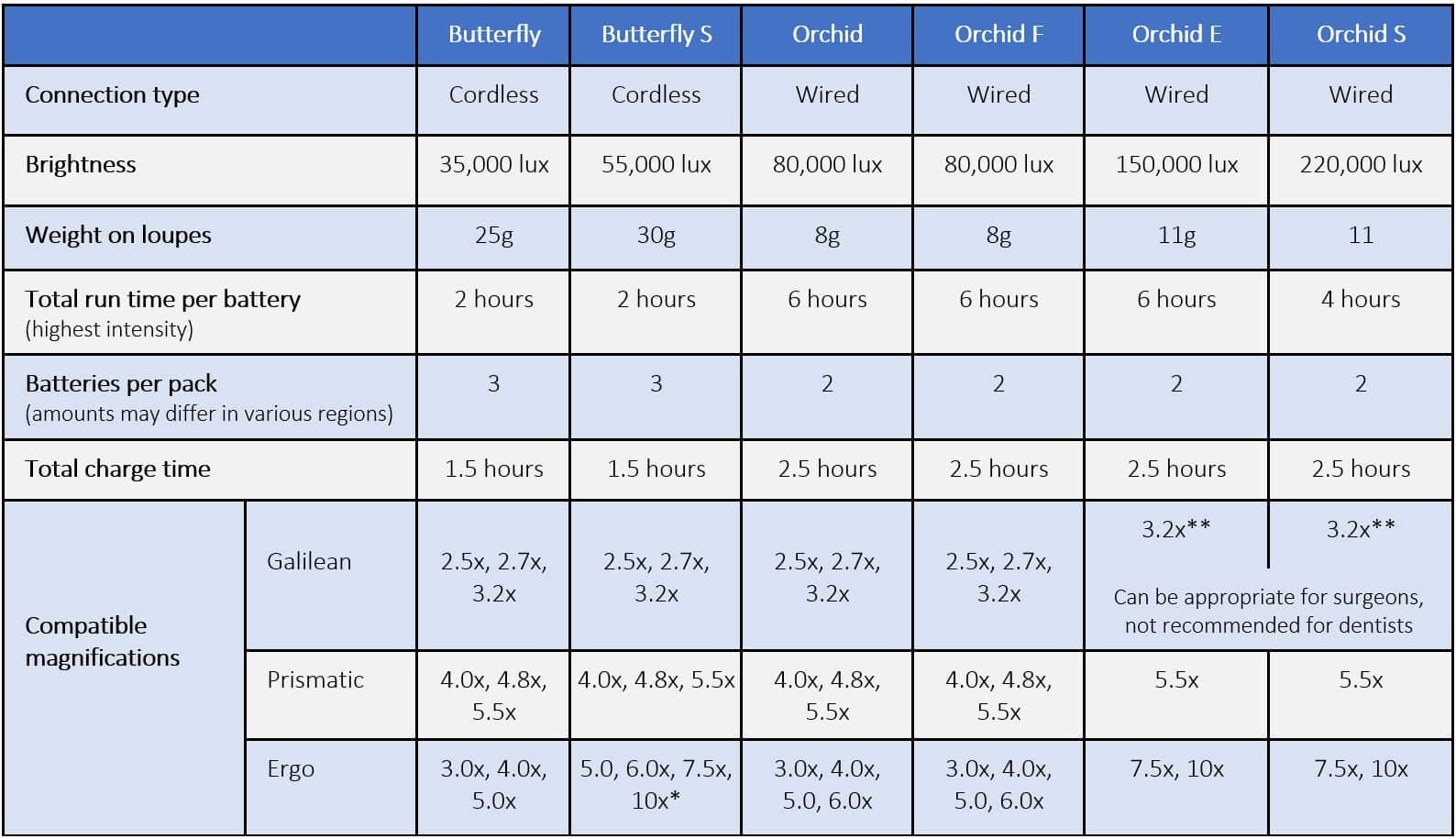
*(10x) Matching Butterfly-S with 10x magnification is feasible; however, it’s not recommended if the doctor’s working distance exceeds 550mm. In such cases, the circumference of the light beam may surpass the field of view, potentially causing excess light to shine into the patient’s eyes, leading to discomfort.
**(3.2x) With a field of view larger than the circumference of the light beam, choosing this combination results in a strong beam of light that may not fully illuminate the entire field of view. Consequently, dark borders may appear around the edges of the field of view. Some surgeons opt for this setup, relying on the pinpoint illumination provided by their headlight while relying on overhead lighting for the remaining operating field illumination.








